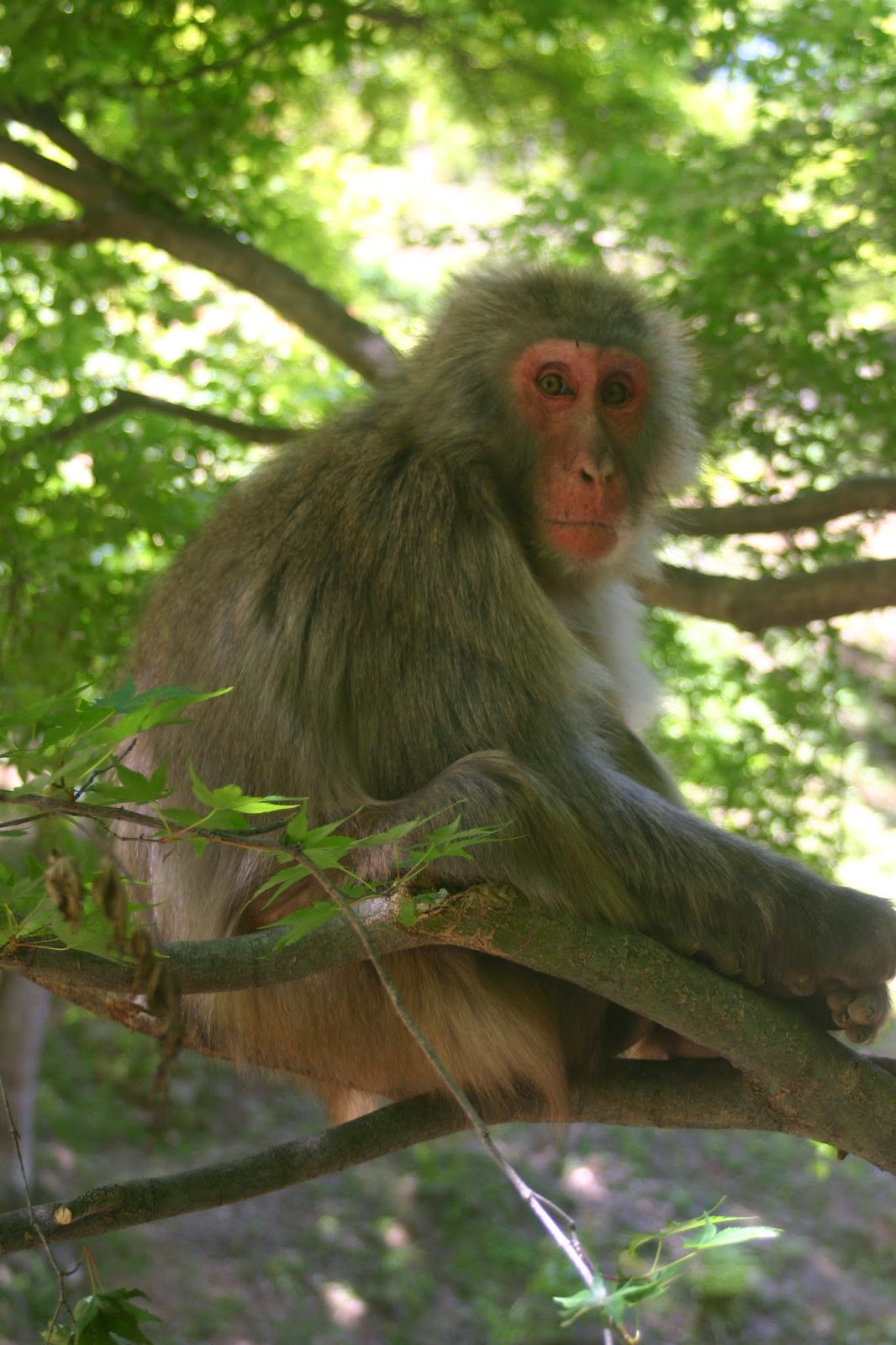The Japanese macaque, also known as the snow monkey, is native to Japan. It actually lives in areas that are covered in snow for significant portions of each year. Other than humans, it lives in a colder climate than any other primate. They have brown, pink or yellowish hair, short stump tails and bare pinkish faces and posteriors. As it gets colder, the thickness of their coats increases. They are found on Honshu, Shikoku and Kyushu, three of the four main islands of Japan. It is estimated that there are about 114,000 of them in the wild.
 |
| I love the expressive faces of the Japanese macaques. The faces vary widely. |
 |
| This old guy looks like he's been around the block a few times. |
In 1977 we visited Iwatayama Monkey Park, a commercial park located on Mt. Arashiyama in Kyoto, Japan. It has a troop of about 170 wild Japanese macaque monkeys. After a hike up the mountain, you find the monkeys roaming around, along with a hut with wire fencing on the windows that keeps the monkeys out. Inside the hut you can purchase food for yourself or to feed to the monkeys. As a young boy I remember going to Hogle Zoo in Salt Lake City and spending time looking at "Louie" the Japanese macaque. We would yell, "get mad, Louie, get mad." And he would jump on the fence and shake it back and forth, screaming in his monkey voice. So it was a thrill to get up close to Louie's cousins.
 |
| They normally walk on all fours. Also note the small tail. |
 |
| A youngster in a tree. |
 |
| A youngster eating. |







The babies sure are cuter than their parents.
ReplyDeleteI've notice MOST babies are cuter than their parents.
ReplyDeleteI bet Hogle Zoo wouldn't appreciate people yelling at their animals anymore, even if it was the only way Louie got his exercise.